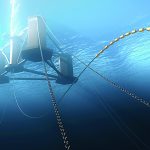DNV, the independent energy expert and assurance provider, has published a substantial revision to DNV-ST-N001, for the design and planning of marine operations for the transport, installation, and removal of offshore wind farms, subsea cables, and oil and gas assets.
The major changes reflect the changing nature of the offshore industry in line with its support of the energy transition, ensuring that the standard remains relevant and supports the development of cost-effective marine operations during a fast-evolving energy transition. DNV estimates that offshore wind will rise globally from 8 percent of total wind production in 2020 to 34 percent in 2050, totaling almost 2,000 GW.

Through continuous engagement with industry, DNV-ST-N001 has been regularly updated and enhanced since it was created in 2016. This revision follows an external hearing exercise, during which more than 400 comments from the industry were received, of which more than 350 were technical in nature. The standard first came about after DNV and Noble Denton legacy standards from the 1970s and ’80s were combined into one substantial and comprehensive document.
The standard can be applied to all marine operations and all key engineering requirements relevant to load-out, construction afloat, voyages, and installation, as well as the loads that should be addressed in the design of these marine operations. It also lays out the requirements from the perspective of the marine warranty surveyor, who reviews the marine operations.
“Following a high level of engagement from the industry, the latest revision of DNV-ST-N001 further reinforces its position as the de-facto standard used to safely undertake marine operations all over the world providing the needed assurance in the implementation of the energy transition,” said Lucy Craig, DNV’s director of growth, innovation and digitalization, energy systems. “Since the standard was first established, it has been vital that it has remained at the forefront of changes to the industry, and these updates will ensure that our customers continue to receive the highest possible standard of assurance.”
Industry engagement drove DNV to update a body of work that spans almost 800 pages, with collaboration spanning across the organization’s global network of marine operations and marine warranty survey experts, working in DNV’s Noble Denton marine services area.
“It was particularly encouraging to note the number of industry comments stemming from developers and contractors engaged in offshore wind-farm construction activities, which demonstrates the importance of the standard to the industry and also influenced updates to numerous areas of the standard,” said Ankor Raithatha, DNV’s global service area leader for Noble Denton.
More info www.dnv.com




































